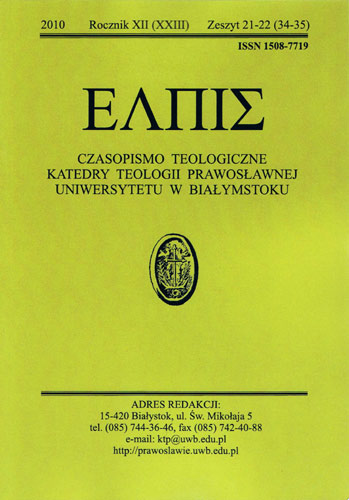Anthropology of the Church Fathers from the IV–VIII centuries
DOI:
https://doi.org/10.15290/elpis.2010.12.04Keywords:
theology, philosophy, anthropology, patristic, Orthodox Church, image and likenessAbstract
In the history of European thought a special place is reserved for the work of St. Gregory of Nyssa „On the Creation of Man”, which was a foundation of the study of man. The IV century is crucial for the understanding of European civilization, because it was then that the term “person”, an essential category in anthropology, emerged. It is characteristic that the study of man was shaped in the Trinitarian and Christological disputes that related to the definition of God and the divine-human reality of Jesus Christ. Thus, anthropology of the Church Fathers considers man in relation to God, believing at the same time that humans are a mystery that cannot be fully explained, since man is created „in the image and likeness of God”. The mystery of a „hidden God” (Isaiah 15:15) has its continuation in the mystery of the „man of a hidden heart” (1 P 3:4). Thus, according to the Fathers of the Church,it is an anthropology of an encounter between man and God.Downloads
Downloads
Published
How to Cite
Issue
Section
License
Copyright (c) 2014 Elpis

This work is licensed under a Creative Commons Attribution-NonCommercial-ShareAlike 4.0 International License.
The detailed terms of the CC BY-SA license (Attribution - Share Alike) are available on the Creative Commons website - link.
The author must complete and send to the editorial office (elpis@uwb.edu.pl) the completed and signed author's contract with a declaration of the originality of the article and the author's contribution to the article. Download Agreement File: HERE








